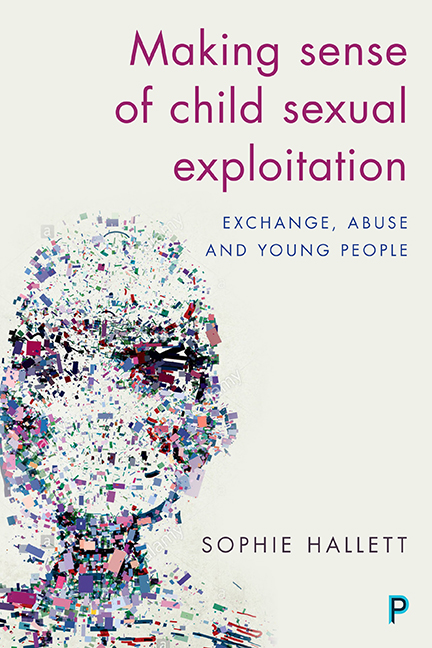Book contents
- Frontmatter
- Dedicaton
- Epigraph
- Contents
- Acknowledgements
- Introduction
- one From ‘child prostitution’ to ‘child sexual exploitation’: an overview
- two Vulnerabilities
- three Risk
- four Exchange and abuse
- five Responses, recognition and reciprocity
- Conclusion: child sexual exploitation – agency, abuse and exchange
- References
- Index
five - Responses, recognition and reciprocity
Published online by Cambridge University Press: 05 April 2022
- Frontmatter
- Dedicaton
- Epigraph
- Contents
- Acknowledgements
- Introduction
- one From ‘child prostitution’ to ‘child sexual exploitation’: an overview
- two Vulnerabilities
- three Risk
- four Exchange and abuse
- five Responses, recognition and reciprocity
- Conclusion: child sexual exploitation – agency, abuse and exchange
- References
- Index
Summary
The introduction of ‘child sexual exploitation’ to social care policy and practice has ensured that the issue is now a safeguarding priority and a child protection concern. While preventative measures focus on reducing risks and educating children and young people about ‘healthy relationships’ and matters of consent, responses to young people caught up in sexual exploitation can include intensive support work or, at the sharp end, removing them to foster care or secure residential units for their protection. This chapter considers what the participants had to say about how best to respond to sexual exploitation and to children and young people involved in it. It may not be too obvious to state that in so doing, they are also telling us about the very nature of the problem itself. As Williams (2010) notes, solutions are intricately connected to the problem. What the problem of sexual exploitation is understood to be determines ‘who’ and ‘what’ is of concern and the necessary responses employed. Here a number of the themes considered in previous chapters arise again, such as care, unmet needs and the conceptual parameters of the problem. The chapter considers the importance of recognition, reciprocity and interdependency within care relationships, and also signals to the need to acknowledge the wider context surrounding sexual exploitation. The discussion begins by hearing from the young people, and their thoughts on the focus of interventions.
“Just don't come in with the solutions until you’ve analysed the problem!”
As is emphatically declared by Leah in the quote above, if we are to begin to consider the possible ‘solutions’ to CSE, we must first make sure that we have a clear idea of what the problem is. Leah's statement was made in reference to support for her individual circumstances, yet it is also an apt summary of the ways the young people talked about responses to CSE in general. Their accounts conveyed a sense of frustration that people hadn't quite grasped the complexities of the issue:
- Type
- Chapter
- Information
- Making Sense of Child Sexual ExploitationExchange, Abuse and Young People, pp. 107 - 142Publisher: Bristol University PressPrint publication year: 2017



